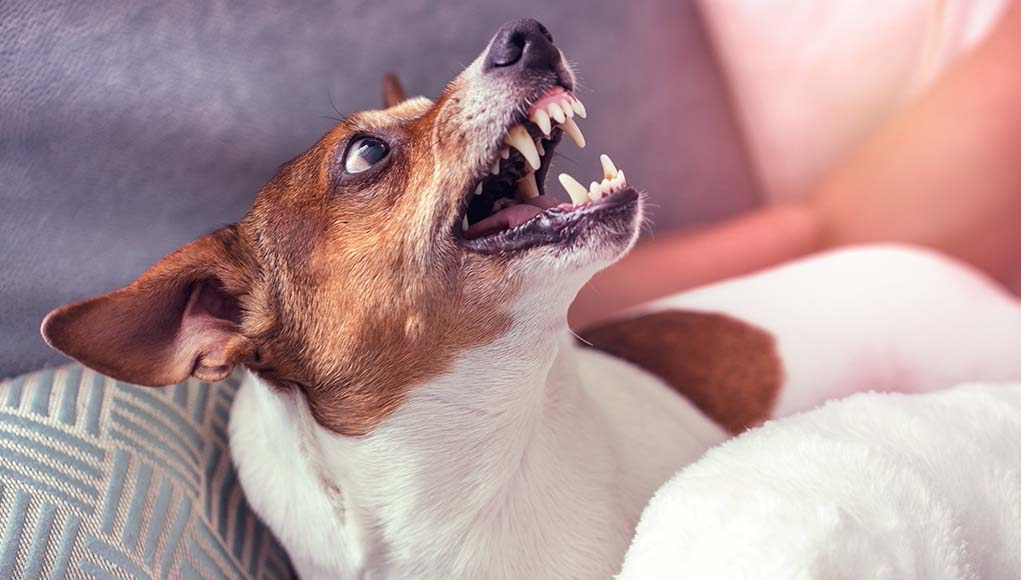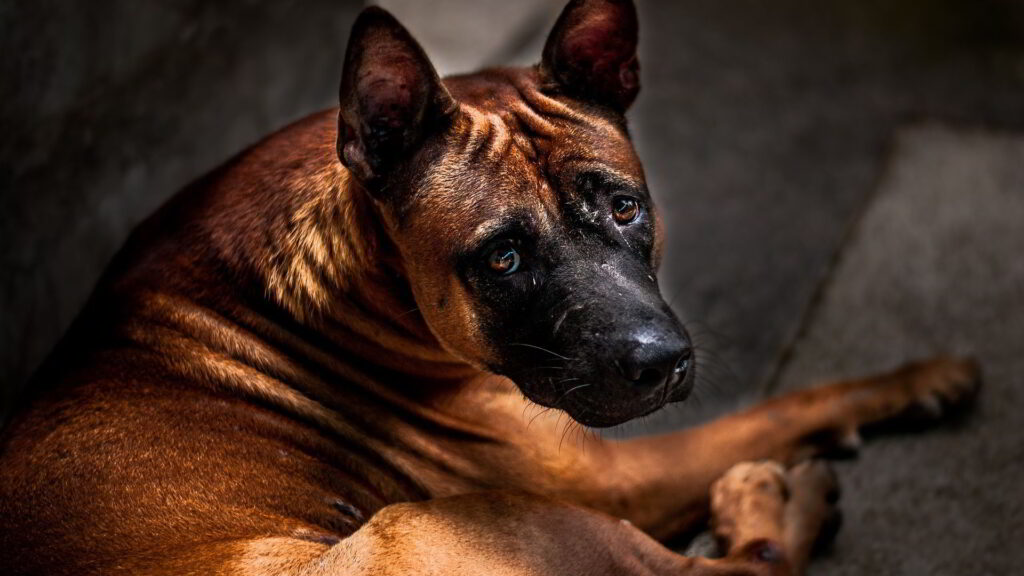While dog bites can happen for many reasons, most puppies bite out of fear aggression. Just like humans, dogs can inherit a tendency to be anxious, but the dog’s environment, life experience, and breed tendencies also play a role.
Poor socialization increases the potential for all kinds of aggression later in life. Common vocalizations include growls mixed with whines. Thereafter, shy dogs inflict hard, dangerous bites because they never learned how to hold back and how to inhibit their bite.
When dogs fear something, it triggers the instinctive “fight or flight” response, and when your puppy can’t escape whatever scares it, it lashes out with teeth. Fear biters think they must fight their way out of the situation, and become so panicked they aren’t able to think in a reasonable manner. When the aggressive behavior makes the scary “thing” go away, the puppy learns that acting aggressively works and uses it time after time.
Fear aggression causes severe damage to the target because usually, the biter had poor socialization and never learned to inhibit its bites. These dogs don’t fight other dogs over status, only fear, and punishing them with harsh physical or verbal reprimands will make the behavior worse.

Signs of Fear Aggression
Fearful dogs show displacement behaviors, such as licking or chewing themselves, sniffing, lip licking, and yawning. Shy puppies and dogs that never played with other dogs typically act fine until a first fight, which often arises out of fear or from being accidentally hurt due to play aggression. Body language includes whale-eye-showing the whites of the eyes in an exaggerated sideways glance. The ultimate appeasement gestures are crouching or rolling onto its back with submissive urination.
Most normal dogs tolerate one dog length and a half (their own length) before feeling uncomfortable. A fearful pup’s sensitive distance may be much greater, and if another dog or person approaches within that range, it attacks. Cage aggression occurs when a dog can’t back away from your reaching hands when the cage or crate door opens, and it defends the space with snarls and teeth.
How to Cure Fear Aggression
Shy pups may always have problems feeling fearful. But you can learn to recognize and avoid situations likely to cause your dog to react with fear. Here are ways to diffuse the fear.

- Don’t stare. Strong eye contact signals dominance and intensifies the intimidation.
- Use your puppy’s own language to calm it personally. Glance away and pretend to yawn.
- Make note of the distance at which the scared pup becomes agitated, and stay beyond that of range whenever possible.
- Avoid cage or crate aggression by opening the door and backing away, using a food lure to tempt the dog to exit on its own.
- Avoid reaching for its collar. That almost always prompts a bite.
- Avoid petting on the top of the head because a descending hand looks threatening and makes worries worse. Instead, pet the puppy on its sides or chest.
- Practice obedience training to build confidence in frightened dogs. The Gentle Leader head halter works quite well with these dogs. That can lead to scared puppies that react with aggression to frightening events.
- Create a house of plenty. Provide lots of toys and treats to reduce competition with other dogs for the good stuff.
- Use the “nothing in life is free” concept to teach your puppy that it must “pay” for everything. Once it recognizes you are in charge so it doesn’t need to be responsible, much of the fear goes away.
- Play builds confidence. Teach it to play “fetch,” but avoid tug-of-war games with fear biters or that can encourage the biting behavior.
- The Bach Flower essence Rescue Remedy, available at health food stores, can help shy and fearful pets. Add several drops of the Rescue Remedy to the dog’s water. It won’t hurt the other pets to sip, too.
- Use Comfort Zone with D.A.P., pheromone therapy to calm fears available from pet product stores as a plug-in product for indoors, or as a spray.
